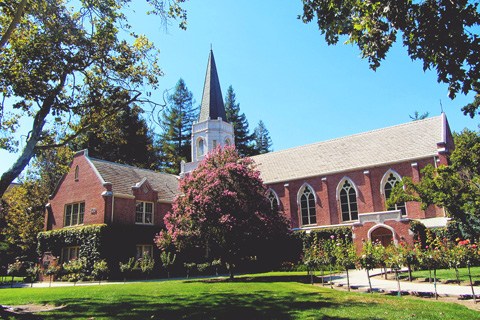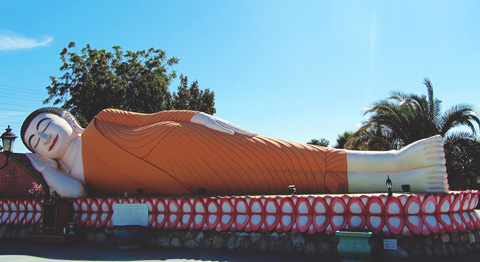In Stockton, hidden gems abound
My Minor League Baseball road trip itineraries often take me to locales that most people wouldn't think to visit and that inspire reactions along the lines of, "Why would you go there?" or a sarcastic "Good luck with that one."
And in my four years of extensive traveling across the Minor League landscape, no location drew as many such reactions as Stockton, Calif., home of the Ports.
The negative response to Stockton was predictable, given the city's well-documented woes in recent years. The Central Valley metropolis (population 291,707, per the 2010 census) was devastated by the 2007 economic collapse, going on to have one of the highest foreclosure rates in the nation. Crime rates skyrocketed, public services were slashed, and in July 2012, Stockton filed for bankruptcy, becoming the largest city in the U.S. to do so (although that ignominious distinction was soon claimed by Detroit).
This sad downturn in Stockton's fortunes has generated waves of bad press, but, the previous paragraph notwithstanding, I don't intend to add to it here. In fact, I would suggest that those in a position to do so (be they Minor League Baseball fans or otherwise) visit Stockton because there's more to the city than the recent onslaught of doom and gloom accounts might suggest. How could there not be?
My own visit to Stockton took place earlier this month, as part of a West Coast swing that began in Bakersfield and ended in Hillsboro, Ore. Prior to attending that evening's Ports game, I met with Tim Pasisz, a former member of the team's front office who now serves as the sports development director for Stockton's convention and visitor's bureau. He told me that his job is to "market the city, to bring events here and overcome the negative publicity that surrounds it. Are we San Diego? Of course not, but there are plenty of positives."
Over the course of a whirlwind two-hour tour, Pasisz showed me some of those positives. The city's Minor League team is named the "Ports" for a reason as Stockton is home to the largest inland port in the country. The port, located on the San Joaquin River, is a bustling industrial complex of cranes and warehouses, but over the course of a short drive east on Highway 4, the landscape changes considerably. Here one can get a sense of the Central Valley's agricultural prowess, as a wide variety of crops are grown throughout the region.
Stockton, in particular, is famous for its asparagus, and every April a massive Asparagus Festival is held in the city's downtown (if you've always wanted an asparagus beer, then make sure to visit). The Ports sell deep-fried asparagus at Banner Island Ballpark and last offseason unveiled an alternate logo featuring an asparagus-branding port worker named Five O'Clock Dock.
Pasisz and I then drove through the University of the Pacific's campus, highlighted by the 178-foot Burns Tower and, directly across from it, the impeccably manicured grounds of Morris Chapel (the site of 300 weddings a year, below). The Ports' former home of Billy Hebert Field (named after the first professional ballplayer killed in action during World War II) is located a few minutes away, and the 60-year-old facility is now leased out to a private company that books baseball and softball games and tournaments on a year-round basis.

The Ports' current home, Banner Island Ballpark, meanwhile, is located on the waterfront adjacent to the Stockton Arena (home of the Thunder, a Minor League hockey team).
After passing through the vibrant "Miracle Mile" shopping district (where, the next day, I ate lunch at the friendly family-owned Saigon Vietnamese restaurant) we drove southeast through an uninviting industrial portion of the city and ended up at the Wat Dharmararan Cambodian Buddhist Temple. This was the most unexpected and therefore most memorable portion of the afternoon. The spacious outdoor grounds of the temple boast dozens of larger-than-life and dazzlingly colored statues that together illustrate the life of Buddha. Taken together it was a surreal and, for me, completely unprecedented experience that I would recommend to anyone who finds him or herself in the Stockton area.

None of the above is meant to sugarcoat Stockton's very real problems and the myriad issues that caused them. I was in the city for a total of 24 hours and don't have any real sense of what it would be like to live there. But one of the great things about visiting Minor League Baseball teams -- in this case the Ports -- is that it gives one the impetus to spend time in areas one otherwise wouldn't. And, after visiting Stockton, I came away with the impression that it is worthy of far more respect than it is liable to receive given its recent troubles.
There's a reason that Oakland A's pitcher and Stockton native Dallas Braden has the city's area code of 209 tattooed across his abdomen, and a reason that a "bobblebelly" of him displaying said tattoo was the most popular giveaway item in Ports' history.
"There's a lot of history here and a lot of residents that are very proud to live here," said Pasisz. "As much as people might say that there isn't a lot to do, there really is."
Benjamin Hill is a reporter for MiLB.com and writes Ben's Biz Blog. Follow Ben on Twitter @bensbiz.